Nope, no way I’m going to write a post on “how to sequence your photographs in 10 steps”, rather I’d like to share why certain ways of doing are more favoured than others for working on sequencing. I’m talking about the practicality of sequencing a serie of photographs, be it a photo essay, a photojournalistic project or even a family event.
How to sequence is an entirely different subject, quite a subjective one, and in my opinion one which should only be taught by people who have actually made it work via successful books or exhibitions. So, in essence quite a few qualified souls in this regard…
Random layout for first glance
Brief note: I’m not covering “action sequence” (where a movement is decomposed in the same picture via assembling several frames or exposures). For the total newbie: a photo sequence means putting a bunch of pictures in the order the viewer will receive those images, it can be for a book, an exhibition walking tour, or just the reading order of a few photographs displayed on a wall.
So in essence sequencing is ordering the visual flow. Some will say storytelling, but this reduces a bit the scope of what is a visual flow, in my very humble opinion.
It is a ridiculous concept for some artists who consider this notion superfluous to the meaning of their work, whereas others are entirely focused on sequencing rather than single image centric. Pushed to the extreme this can mean poor work properly assembled may increase its own value… don’t laugh some highly regarded individuals do that for a living…
Anyways if what Confucius said is half true then there might be some middle ground here. And with great hopes we can even dream about what great work looks like when arranged in a perfect sequence. Or we can simply do our best with what we have. I’ll live with that…
Therefore as long as at least 2 images are presented, the order, the placement or arrangement can be considered a sequence. This is meant to come after choosing the images of a project, those ones that should stay and see the light of day in print. Or so we think: the sequencing comes after the editing. But that is not always true.
Indeed, some (most) images won’t find their place in a sequence and will be discarded for that reason alone. Some others, irrelevant as lone images, will trigger interest when combined with others in a series of photos. It can be for visual relief for instance, a pause, or any other intended effect.
Sequencing helps us in defining precisely what we want to convey when we go beyond the usual “I put those together because it looks good to me”, which is already saying what the intention is for the sequence i.e. looking good is enough… or in other words: the subject matter doesn’t require more in the author’s opinion. Which may souds like “I’m not passionnate enough about that subject to care beyond it flowing good…” to each is own after all.
bland, ok, why not? well… why then?
All I’m saying is whether or not we make a consciously deep or an uncousciously shallow decision about sequencing our images, the arragement has a meaning of its own anyways. Conversely hard work and deep conscious decisions don’t always mean we’ll reach your goals, but I’d bet we do give ourselves more chances for sure…
Now how the heck do we do this for more than 10 images on screen? using thumbnails on an ever too small a screen?
well try that! I garantee your eyes will bleed in less than 20 minutes, totally un.f..bloody practical!
So now the tried-and-true approach: print, yes! print via good old dead-tree-media, as in print your photographs, lay them on the floor or a table and try to arrange them. Now the screen got scaled to room size, no scrolling madness, no drag and drop eeeeeh! pure human glance, gaze and touch. What a freaking re-lief!
Nothing new under the sun the power of the print prevails!
Ok, I know, pretty obvious right? Well no need to re-invent the wheel if it keeps on rolling… even better! you don’t have to buy your own prints just for that. After all you may just want to see if it works before committing to an edit. Or you may have poor scans and intend to properly print or scan them only when all (text/illustrations/images) has found its place.
Here comes the not so new magic trick: the office printer, laser printer or what have you. Yes the boring cheap printer fed with cheap recycled paper, add a cheap pair of cissors and you can kiss your screen good-bye. There is absolutely no need for proper photographic print at this stage, we just need some visual reference, some tactile thumbnails of sorts.
my cheap office printer running on recycled paper, yes I know it’s a mess…
Anyways, this is how I end up doing it, not a reference by any means, but if it works for me, then it might work for a few others if I’m not too much of a wierdo… insert huge leap of faith here…
So here you go, yes those prints are hugly, but fonctionnal, and yes those quick phone pics are appaling. But hey! they’re still functionnal in the context of this post. “Horses for courses” right?
So what are the advantages of office paper (recycled none the less)?
- It’s obviously cheap
- Images can be printed to any given size
My personal preference for size is: not too small so the details of the image can still be distinguished and not too big so prints can be manipulated, shuffled and rearranged easily.
I usually print 6 photos on A4 paper
All in all palm size is what works best for me, I feel 4×5″ prints are a bit too large for practical layout as they rapidely occupy too much real estate, I don’t want to go up a ladder to see… the whole picture … (easy, I know).
What is intersting in photo sequencing is that some flaws are obvious, repetitives images for instance. Or more strikingly: missing images! the ones that should be there to harness the visual flow. Sequencing does help the work to reach a body-of-work-status, or more frequently in my case, a body-in-the-making-kind-of-work status.
Trying to make sense: from chaos to meaning, with hope…
At least this is what it does for me, helping me in having a more objective view of what I am doing. ‘Cause after all who needs a portfolio/project review right off the bat? a work needs to be seasoned before being elected for pier/master review.
bland adhesive office tape to the rescue of progress in the making
I mean you know your flaws, mine are right in front me: sameness, whereas deliberate at first the lack of close-ups seems ill footed in the visual flow compared to its intended meaning etc… additionnaly: Man! why do I insist in trying to make myself believe I can own a 35mm focal stance on this project, whereas the work flows like I went from 50mm to 35mm without adjusting my footing etc…
So in the end a good kick in the lower back is more painful when received from your own alledgedly good self than anyone else’s, and as more chances to trigger fruitful counter action strikes.
Here it is the first draw of a visual flow, just too feel its awkwardness in the hand
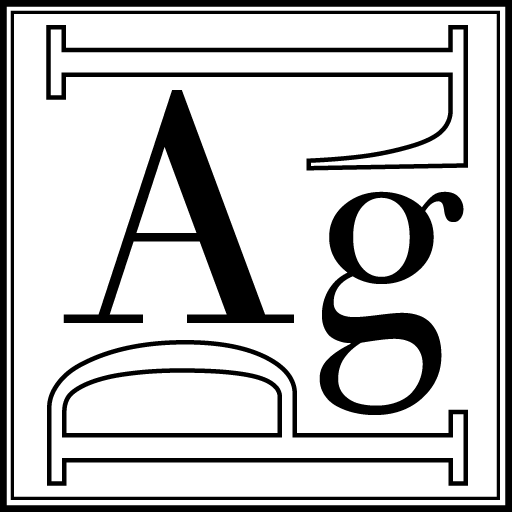
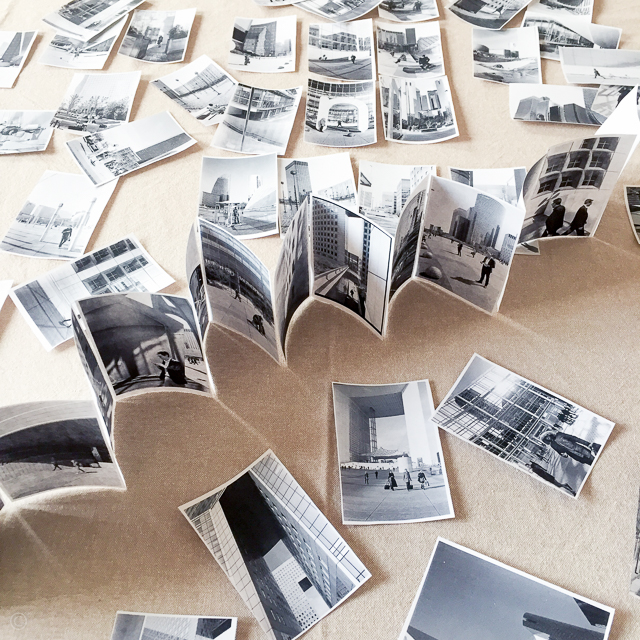
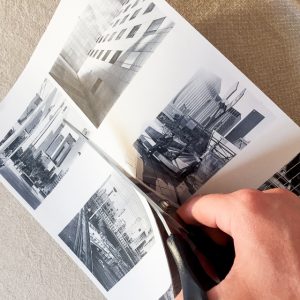
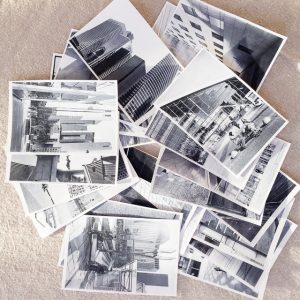
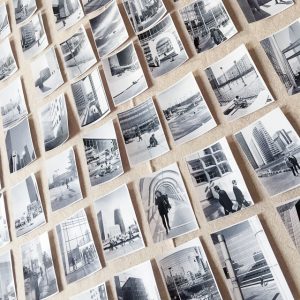
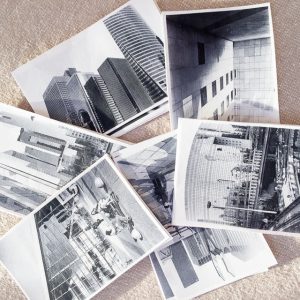
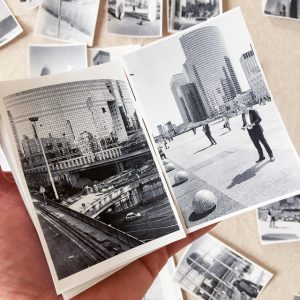
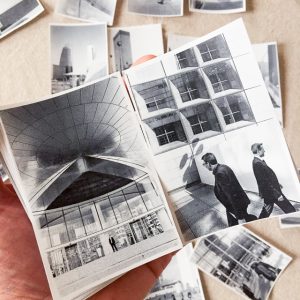
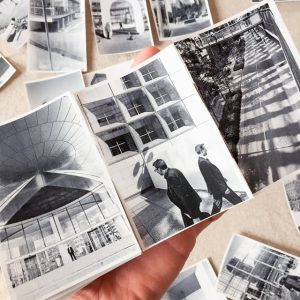
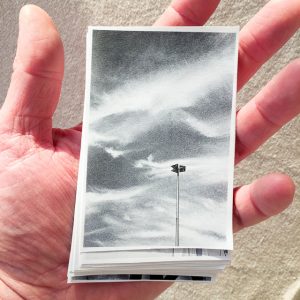
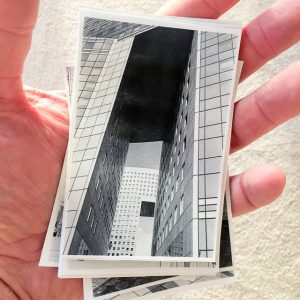
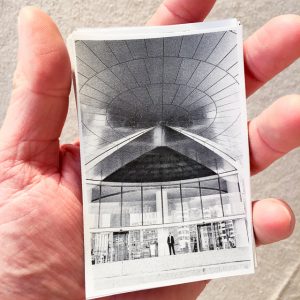
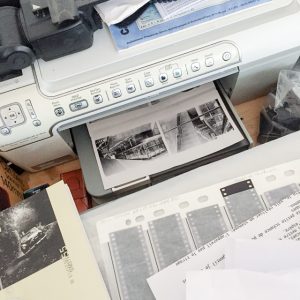
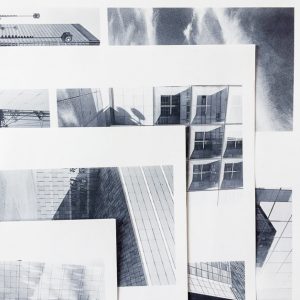
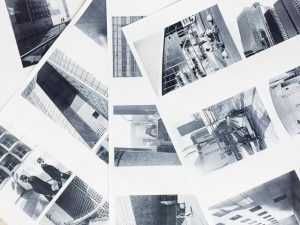
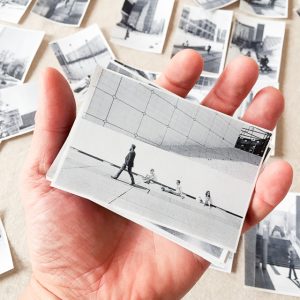
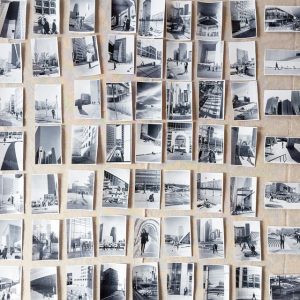
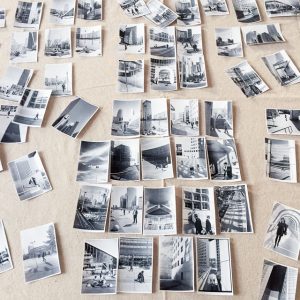
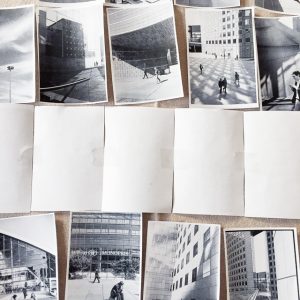
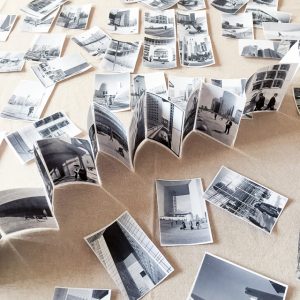
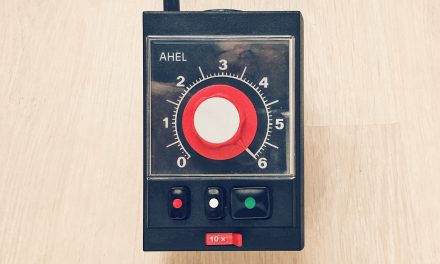

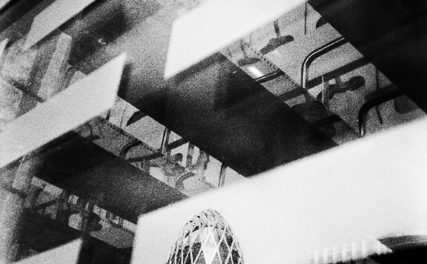

Hello, thank you for this post ! Do you recommand some laser printers for this work ? (with a cheap cost per page and eventually quite good photo quality print. Thanks for your help
an amateur photographer
Hi Laurent, sorry for the late answer I was off grid for a moment, yep a laser printer will do the job just fine. As far as I’m concerned I just need to be able to recognise the image subject or general shapes and lines, so a very bad print on the print quality scale is enough for the task. But some like to enjoy the process a bit more with a tad more quality to the print, which is just fine, to each his own. After all in a project what’s important is reaching the destination but enjoying the journey makes it a much better experience. On the digital side bad quality prints have two advantages they’re quick to produce and quite cheap to run, so they’re a good solution for a large project. As we all know the screen is always too small… 😉